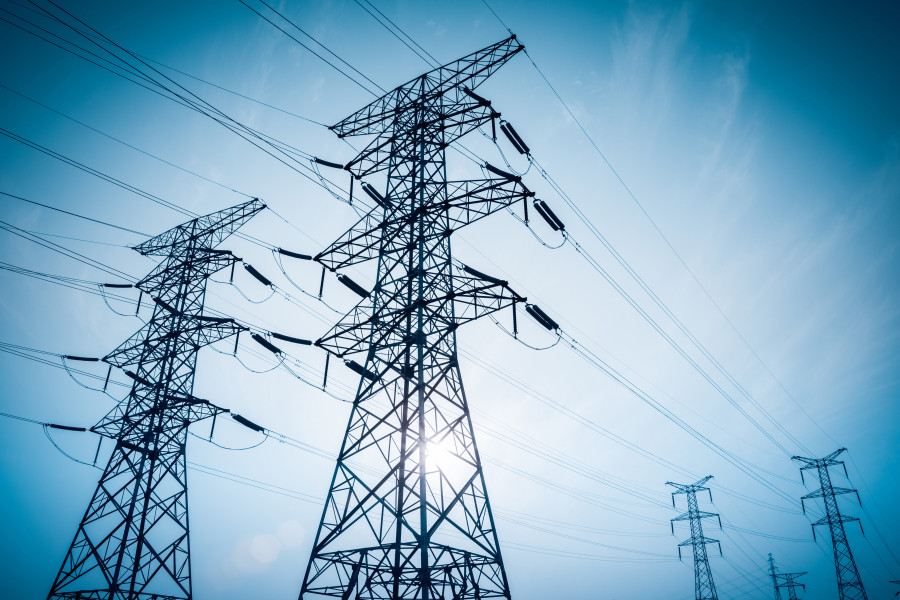Money
Cross border transmission line faces opposition from Nawalparasi locals
Nearly 200 kathhas of arable land will be acquired to erect 120 pylons on Nepal’s side.
Prahlad Rijal & Narayan Sharma
The proposed alignment of the New Butwal-Gorakhpur transmission line between Nepal and India has drawn ire from the locals of Nawalparasi who have demanded the project to reroute power lines, citing heavy loss of arable land.
Nepal and India have plans to erect 120 pylons by acquiring one and a half kathhas of arable land for each pylon passing through eastern and western parts of the district.
That translates to around 200 kathhas of arable land that will be bought from locals to cover the 20-kilometre portion of the transmission line passing through Nepal’s territory.
The objection from locals comes barely 15 days after the two South Asian neighbours agreed to fund the 135-kilometre-long second high capacity cross-border transmission line by pouring in joint equity investment after multiple rounds of deliberations.
In the recently held secretary-level meeting between energy officials of Nepal and India, the officials had agreed to set up a company within three months and build the Rs 13 billion transmission line through debt-equity financing.
According to the Energy Ministry, the Nepal Electricity Authority and a joint venture between the power utility and India’s Power Grid Corporation are expected to sign an Implementation and Transmission Service Agreement within six months.
The project is expected to be executed within 3 years from the date of the agreement.
With an agreement looming, locals have demanded authorities to reroute the 400 kV transmission line sideways to the river in fallow land.
Locals say that if the lines are rerouted through river banks, loss of arable land could be minimised.
According to Narendra Gupta, mayor of Ramgram Municipality, the construction survey executed in five of the wards in Ramgram has hinted at large scale loss of arable land, leading to strong opposition from the locals.
"The lines should be rerouted to avoid disputes on compensation, easement rights and to minimise devaluation of agricultural land," said Gupta. "Despite cost overruns, it would be appropriate to build the lines by utilising fallow land on the river banks."
As per prevailing laws, it requires authorities to acquire easement rights of 23 metres of land left and right from the 400 kV high voltage cables.
According to ministry officials, although an environmental impact assessment for the transmission lines has been completed, the project is still in the preliminary phase allowing the ministry ample time to take stock of the situation in the project affected region and come up with a solution.
“The ministry will try to minimise the risk as much as possible while executing the project,” said Prabin Raj Aryal, spokesperson of the Ministry of Energy, Water Resources and Irrigation. “However, the alignment of the New Butwal-Gorakhpur transmission line has already been revised once to avoid land set aside for the construction of residences.”
The proposed transmission line is a major component of the $630 million ‘Nepal Compact’ — an agreement between the government of Nepal and Millennium Challenge Corporation of the US to fund electricity and road projects of strategic importance in Nepal.
The project has been touted to set up a reliable route for energy banking by synchronising Nepal's power grid with India's and allow the power utility to sell large quantum of surplus power, which Nepal is poised to generate in the coming years.
As per the power utility's estimate, Nepal will have a surplus of around 8,000 megawatts by 2025 as the country's generation capacity is expected to reach 10,924 megawatts while peak demand is likely to be 2,981 megawatts.
Millennium Challenge Account-Nepal, the project implementing agency has also made plans to start the bidding process for the execution of the 400 kV transmission line under the Electricity Transmission Project.
According to Millennium Challenge Account-Nepal, the detailed design work, finalisation of the transmission line alignment, and tender, as well as planning of the contractor selection process, are progressing well.
“Millennium Challenge Account-Nepal intends to publish a Specific Procurement Notice and release the bidding document with the final Scope of Work and Employer’s Requirement by November 2019,” the organisation said.
There are five components in the transmission project—one segment starting from the northeast of Kathmandu at Lapsiphedi and extending to the west of Kathmandu near Ratmate, a second segment from Ratmate to the industrial town of Hetauda located south of Kathmandu, a third segment from Ratmate to Damauli in the west, a fourth segment from Damauli to Butwal in the southwest, and a fifth segment from Butwal to the Indian border which is part of the cross-border transmission line.
The Energy Ministry has also accorded high priority to the project as it will allow efficient distribution of surplus power and imported power to high energy-consuming cities like Bhairahawa, Butwal, Pokhara and Narayangadh.
Also, the lines can be used to evacuate energy produced in the Kali Gandaki, Marshyangdi and Trishuli corridors where there is a high concentration of power schemes.




 17.12°C Kathmandu
17.12°C Kathmandu
.jpg)















